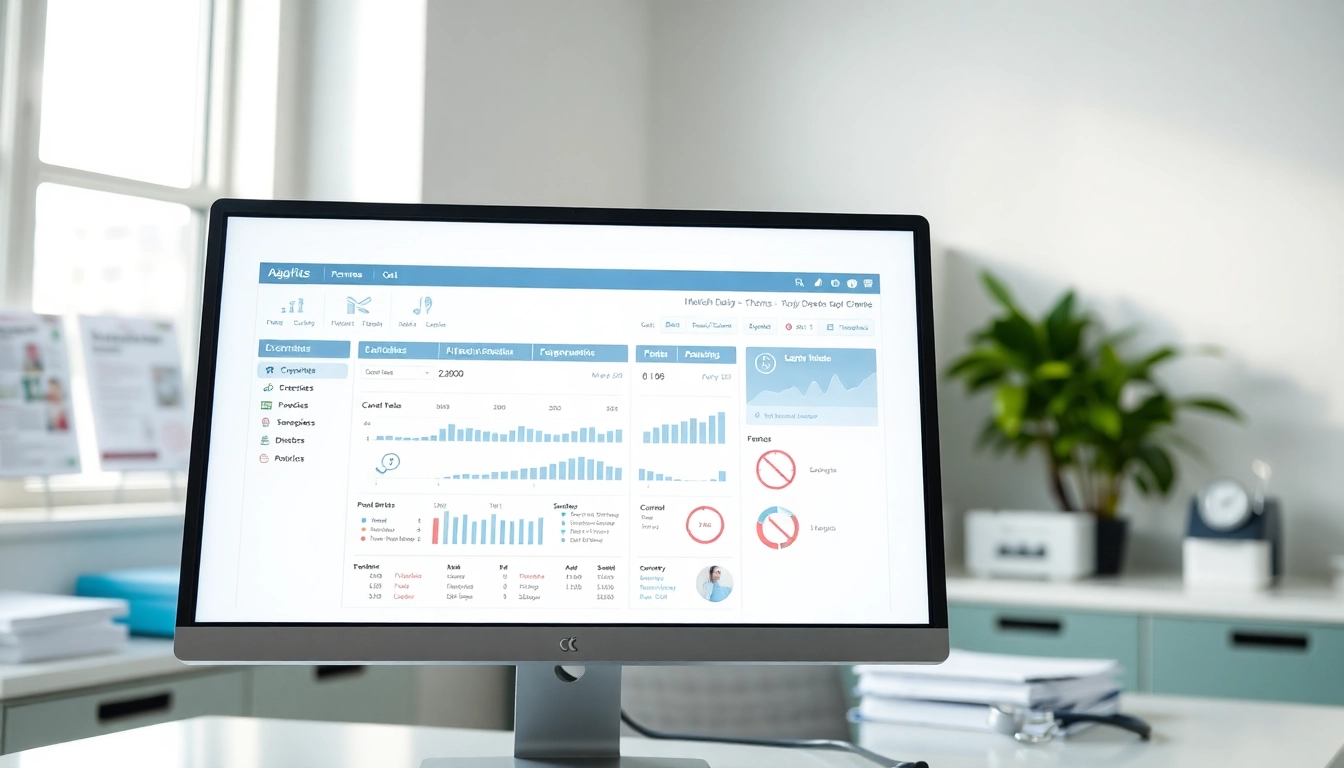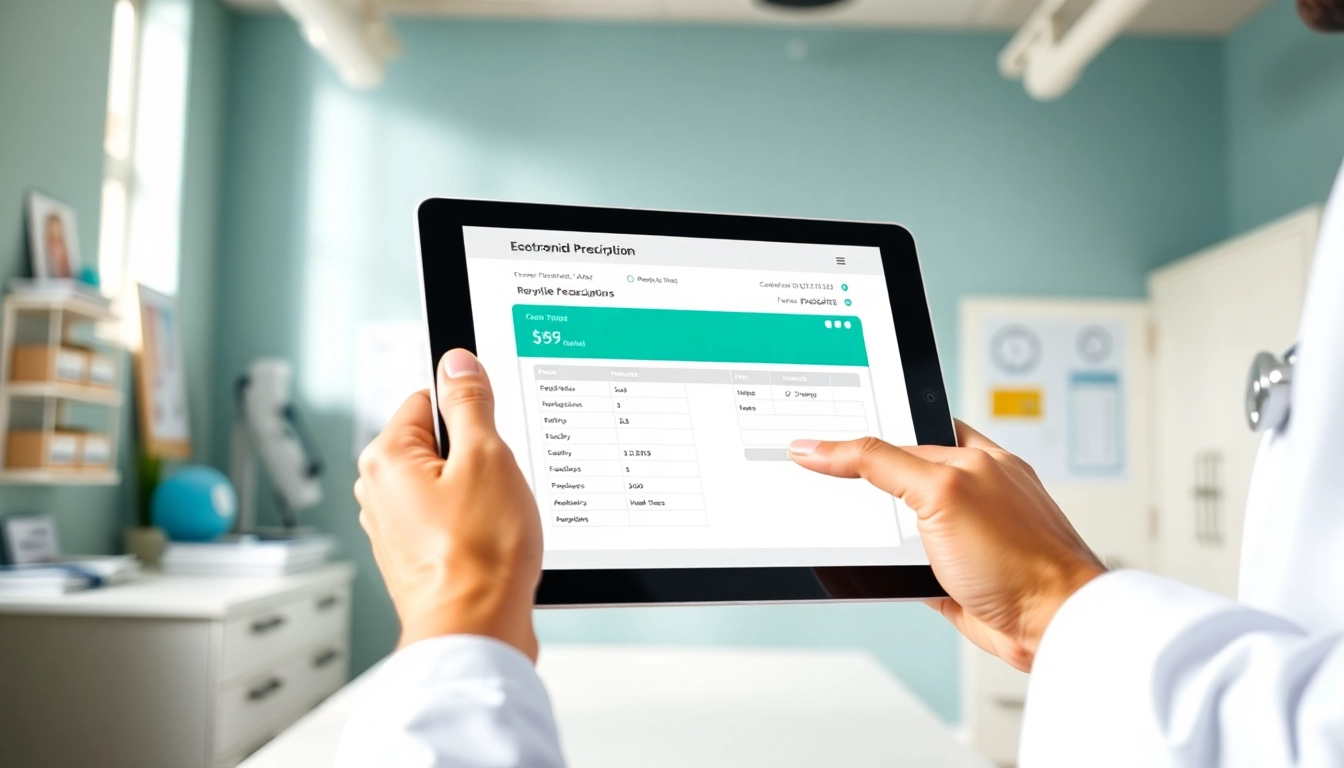Understanding ePrescribing Software
What is ePrescribing?
E-prescribing, or electronic prescribing, is a digital way of generating and sending prescriptions to pharmacies. This innovative solution eliminates the traditional handwritten prescription process, significantly reducing the risk of errors associated with illegible handwriting. The system allows healthcare professionals to transmit patient prescriptions directly from their electronic health records (EHR) systems, streamlining the prescribing process and improving patient care.
Key Benefits of ePrescribing Software
The adoption of e-prescribing software has grown steadily due to its numerous advantages, including:
- Increased Safety: ePrescribing minimizes medication errors stemming from miscommunication between the prescriber and pharmacist.
- Improved Efficiency: This technology reduces administrative burdens by automating prescription refills and streamlining communication.
- Better Patient Compliance: Patients are more likely to adhere to their medication regimens when prescriptions are easily accessible through electronic means.
- Enhanced Medication Synchronization: ePrescribing allows for better management of patient medications, ensuring that all are accounted for and correctly timed in a patient’s treatment plan.
- Cost Savings: By reducing errors and optimizing the prescribing process, healthcare providers can save on costs associated with medication misadventures.
Challenges in Selecting the Right Software
Selecting the right e-prescribing software can present several challenges. Providers often face difficulty navigating a marketplace flooded with options, each claiming to be the best solution. Factors to consider include:
- Integration: The software must seamlessly integrate with existing EHR systems to avoid compatibility issues.
- Configuration: Software should be customizable to fit the specific needs of the practice, taking into account the unique workflows and patient demographics.
- Regulatory Compliance: It’s crucial to choose software that adheres to federal and state regulations, including those set by the Drug Enforcement Administration (DEA) for controlled substances.
- User Support and Training: Adequate support and training are essential for smooth implementation and user adoption.
How to Analyze ePrescribing Software Reviews
Factors to Consider in Reviews
When analyzing ePrescribing software reviews, evaluating certain key factors can provide deeper insights into the product’s utility:
- User Experience: Accurate user experiences can indicate the practicality and usability of the software.
- Feature Outlines: Reviews should detail the functionality and features that the software offers.
- Customer Support: Check for mentions of the quality and availability of vendor support.
- Pricing Details: Understanding the costs associated with the software and its value for money is essential.
Common User Experiences Highlighted
User reviews frequently highlight experiences that can serve as valuable indicators of an e-prescribing software’s effectiveness:
- Many users report an initial learning curve when adopting new software, but this is often outweighed by long-term efficiency.
- Positive reviews consistently point to the reduction in prescription errors and improved communication with pharmacies.
- Some users experience frustration with integration issues, particularly when switching from one EHR to another.
- Fast and responsive customer support is a common theme in favorable reviews, emphasizing the importance of quick assistance for troubleshooting.
Identifying Authentic Reviews
In a digital age ripe with reviews, distinguishing authentic feedback from manufactured or biased opinions is crucial. Here are some tips for identifying genuine reviews:
- Diversity of Opinions: Authentic reviews usually contain a mix of pros and cons, highlighting both strengths and weaknesses of the software.
- Detailed Descriptions: Look for reviews that provide specific examples of how the software has impacted their workflow instead of generic statements.
- Verified Users: Some platforms offer ‘verified purchase’ badges; these can be indicative of genuine user insights.
Top Features to Look For in ePrescribing Software
Integration Capabilities with Other Systems
Integration is one of the most important features to consider when evaluating e-prescribing software. The ability to interface with EHR systems, lab orders, and pharmacy benefit managers enables a smooth workflow and reduces the potential for errors. A well-integrated system can lead to improved quality of care and enhanced operational efficiency.
Compliance and Security Standards
Healthcare providers must ensure that any e-prescribing software they choose complies with federal regulations, such as HIPAA and the Digital Millennium Copyright Act (DMCA). Security standards are non-negotiable, including encryption of patient data and secure login processes, to protect sensitive patient information. Compliance not only protects patients but also safeguards the practice from potential legal repercussions.
User Interface and Experience Design
A user-friendly interface significantly enhances the experience of healthcare providers using e-prescribing software. Intuitive navigation contributes to quicker workflows and minimizes training time. Evaluate the software based on ease of use, customization options, and accessibility—ensuring that users with different levels of tech-savviness can adapt without significant barriers.
Comparative Analysis of Popular ePrescribing Software
Feature-by-Feature Comparison
When comparing different e-prescribing software options, a feature-by-feature analysis can illuminate the best choices for specific organizational needs. Key features often evaluated include:
- Prescription Management: How well the software manages electronic prescriptions, including refill requests and follow-ups.
- Medication History Access: The ability to access and review a patient’s medication history seamlessly.
- Drug Interaction Checking: Integrated tools to flag potential drug interactions or allergies during the prescribing process.
Pricing Structures Across Solutions
The cost of e-prescribing software can vary widely, often depending on the pricing model the vendor uses. Some common structures include:
- Subscription-Based: Monthly or yearly fees that provide access to the software and updates.
- Per-User Pricing: Fees based on the number of users who will access the system, which can scale with practice size.
- One-Time Licensing: A single purchase price for unlimited use, but often accompanied by additional fees for updates and support.
User Ratings and Feedback Summary
User ratings provide a quantifiable measure of satisfaction that can aid in decision-making. Summary statistics from various review platforms can help highlight how each solution stacks up against others. Pay attention to the average star ratings, as well as the volume of reviews, since insightful feedback from many users is generally more reliable than the opinions of just a few.
Best Practices for Implementing ePrescribing Solutions
Steps for Successful Implementation
The implementation of e-prescribing software should be approached methodically. Consider following these steps for a smoother transition:
- Assess Organizational Needs: Conduct a needs assessment to determine what features will benefit your practice the most.
- Choose the Right Solution: Once needs are established, select an e-prescribing software that aligns with your requirements.
- Develop an Implementation Plan: Create a roadmap outlining the deployment process, including timelines, responsible parties, and training sessions.
Training Staff on New Technologies
Successful adoption of e-prescribing software relies heavily on comprehensive training for staff. Consider these approaches:
- Hands-on Training Sessions: Facilitate interactive sessions where staff can practice using the software in a controlled environment.
- Create Reference Materials: Develop guides and FAQs that staff can refer to during and after training.
- Ongoing Support: Set up a system for post-implementation support, allowing staff to ask questions and receive help as they navigate the new software.
Monitoring Performance and Gathering Feedback
Post-implementation, monitoring the performance of e-prescribing software is critical for continuous improvement. Effective strategies include:
- Regular Feedback Surveys: Collect staff feedback on software usability and efficiency to identify areas for improvement.
- Data Analytics: Employ analytics tools to measure the impact of e-prescribing on patient outcomes and operational efficiency.
- Adjust Strategies: Use findings from monitoring efforts to make necessary adjustments or facilitate further training.
The landscape of healthcare technology continues to evolve, making it essential for providers to remain informed and adaptable. By utilizing comprehensive eprescribing software reviews, healthcare professionals can make informed decisions that ultimately lead to enhanced patient care and improved practice efficiency.



